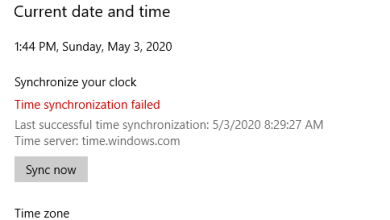Is your Microsoft Defender crashing upon opening it? Try this!
Microsoft Defender crashes occur when you are trying to access the Windows Security app on your Windows machine. The crashes can vary from being specific to a certain feature of the Windows Security app or to the whole app.
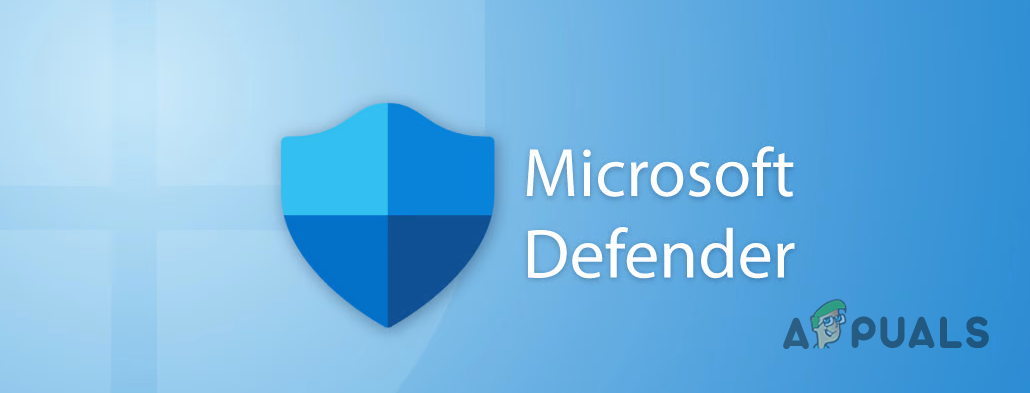
In some instances, you may encounter a crash when viewing the Protection History section in Windows Defender. In other instances, the app might completely crash after opening.
Various factors could potentially cause this issue. System files on your computer could contribute to these crashes in Windows Defender, or corruption within the app’s package could also be a possible culprit.
We will go through numerous solutions that will help you resolve the issue in every potential case in this article.
How can I fix Microsoft Defender crashes?
The Windows Security app can crash for a number of reasons. If you are encountering a crash when viewing the protection history tab, the issue might be related to the Windows Security scan files on your system. Similarly, there are other possible aspects to the issue as well. Let’s go through these in more detail below, while also providing a solution for each reason.
- Delete Protection Scan History Files:If the Windows Security app crashes when you attempt to view the Scan Protection History on your computer, the issue may be related to the local scan history files. This can occur if the files are damaged or corrupted, potentially causing the app to crash upon attempting to read them. In such scenarios, you should delete the scan history files to prevent future crashes.
- Perform SFC Scan: Another potential cause of the problem can be the Windows system files on your PC. If the system files are encountering issues because of corruption, the components of the operating system will not function properly and lead to annoyance. To resolve the matter, you will have to repair your system files by performing an SFC scan on your computer.
- Install Windows Updates: In some cases, the issue can also originate due to a recent Windows update. It is not uncommon for Microsoft to release updates, especially in Windows 11, that can brick the Windows Defender app. Such issues are often resolved in future patches released by the company, which can be the case here as well. Thus, install any pending Windows updates on your computer as they can mitigate the problem.
- Reset Microsoft Defender: The Microsoft Defender package can sometimes get damaged, obstructing the functionality of the Windows Security app on your device. In such instances, you can resolve the issue by resetting the Windows Security app on your computer. This action will delete the package’s data and eliminate any inconsistencies that are causing the issue.
- Clean Boot Windows: Third-party programs running in the background can cause Windows Defender to crash. This often occurs when these apps interfere with security services, particularly other third-party security programs. To mitigate this, consider performing a clean boot of your Windows to prevent third-party apps from launching at startup. If Windows Defender functions without issues under a clean boot, it indicates that a third-party app is the cause of the problem. You can identify this app by turning on the services individually.
- Reset Windows: Finally, if the above methods do not resolve the issue for you, your last resort would be to reset your Windows device. This will reinstall all of the packages again on your computer as a normal reinstallation would. Resetting your PC allows you to keep your personal files and reinstall Windows. This should navigate the issue for you once done.
1. Delete Protection Scan History Files
- First, open an elevated command prompt window. To do this, search for cmd in the Start Menu and click the Run as administrator option.

Opening Command Prompt as Admin - In the Command Prompt window, type in the following commands one by one:
del "C:\ProgramData\Microsoft\Windows Defender\Scans\History\Service\DetectionHistory\*" del "C:\ProgramData\Microsoft\Windows Defender\Scans\mpenginedb.db"
- This will delete the scan history files on your computer and resolve the issue.
2. Perform SFC Scan
- Open the Start Menu and search for CMD. Right-click on the result shown and click Run as administrator.

Opening Command Prompt as Admin - Then, in the command prompt window, type in the following command:
sfc /scannow

Running SFC Scan - Wait for the scan to be complete.
- After that, enter the following command to repair the system components:
Dism /Online /Cleanup-Image /RestoreHealth

Restoring System Health - Once this is done, check if Windows Defender is still crashing.
3. Install Windows Updates
- Use the Win key + I shortcut to open the Settings app.
- After that, switch to the Windows Update section.
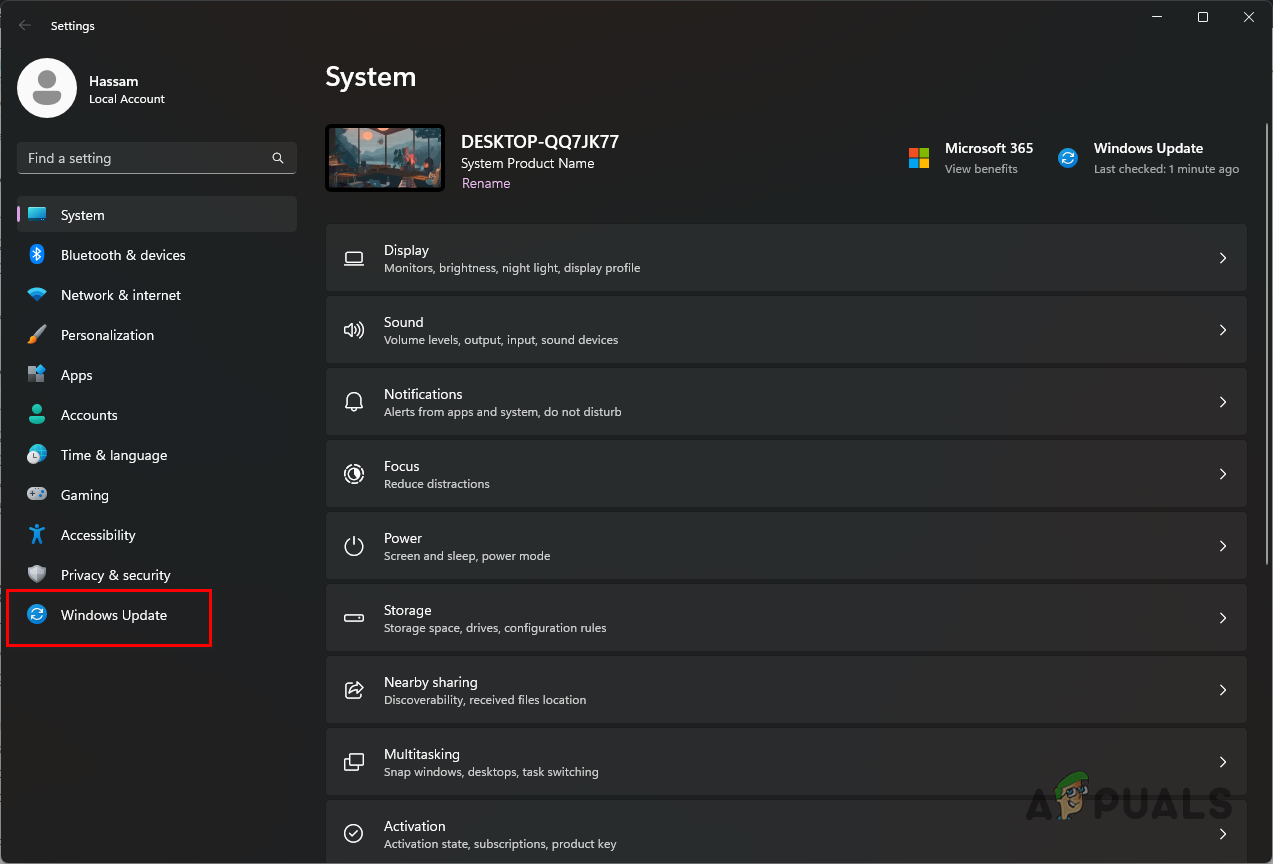
Navigating to Windows Update - Then, click the Check for updates option.

Checking for Available Windows Updates - Wait for any available updates to be downloaded and installed.
4. Reset Microsoft Defender
- Open the Settings app with the Win key + I buttons.
- In the Settings app, navigate to Apps > Installed apps.
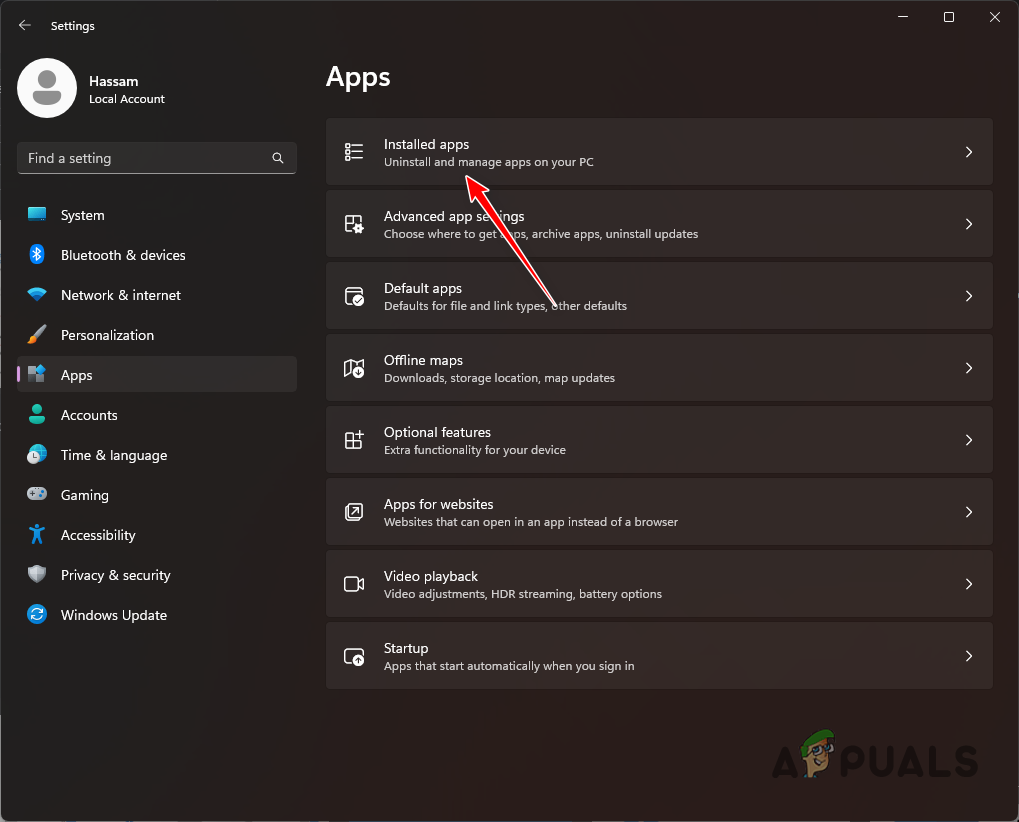
Navigating to Installed Apps - From the list, locate Windows Security.
- Then, click on the three dots and choose Advanced options from the menu.

Opening Windows Security Advanced Options - Scroll down and click the Reset option.

Resetting Windows Security
5. Clean Boot Windows
- Use the Windows key + R shortcut to open the Run box.
- In the Run dialog box, type msconfig and press Enter.
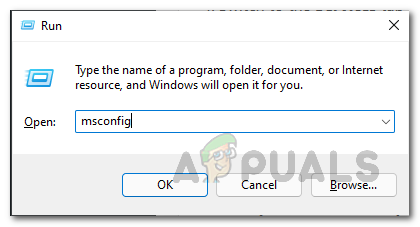
Opening System Configuration - On the System Configuration window, navigate to the Services tab.
- Then, tick the Hide all Microsoft services option.
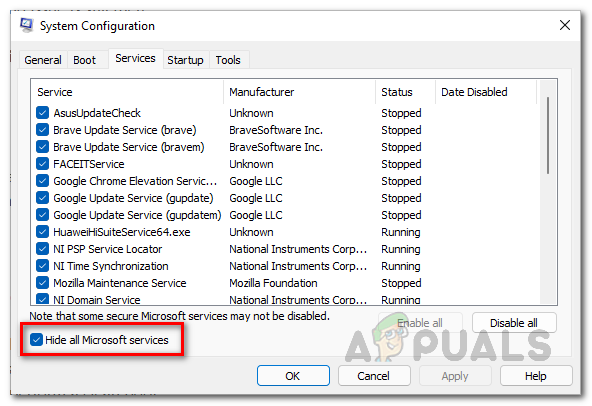
Hiding Microsoft Services - After that, click the Disable all option. This will disable all third-party services on startup.
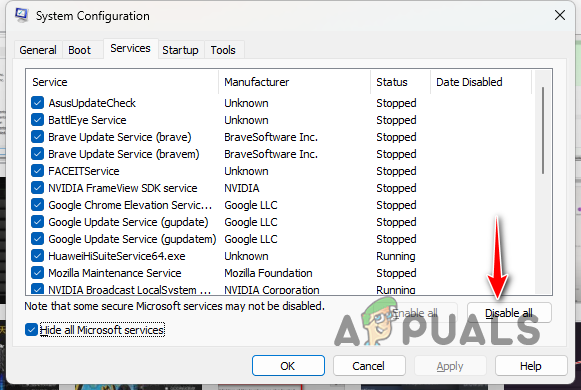
Disabling Services on Startup - Click Apply.
- Then, switch to the Startup tab and click Open Task Manager.
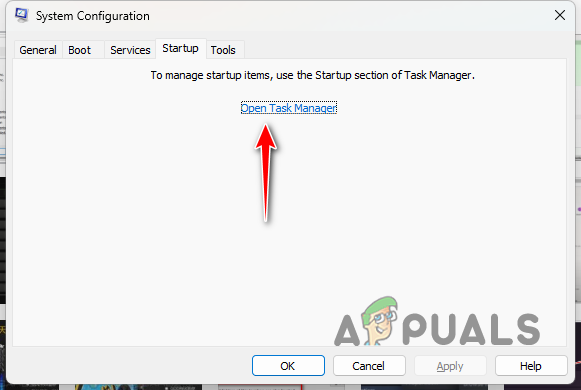
Opening Task Manager via Startup tab - In the Task Manager window, select the startup apps one by one and click Disable.
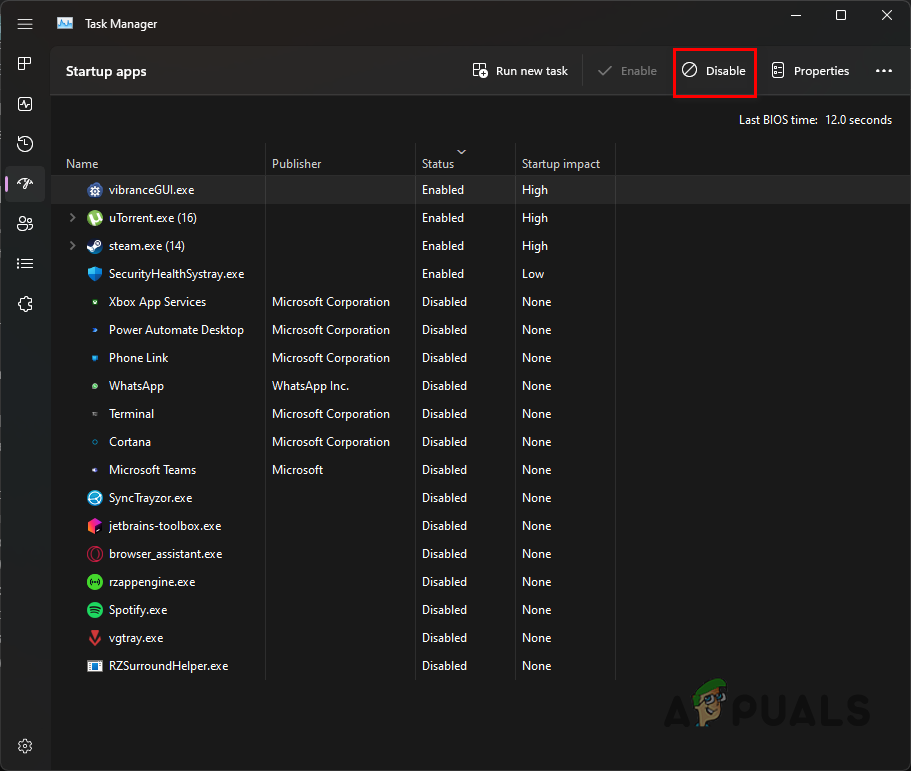
Disabling Apps on Startup - Once you do that, restart your computer to perform a clean boot.
- See if the issue is still there.
6. Reset Windows
- Open the Settings app via the Windows + I keys on your keyboard.
- Navigate to System > Recovery in the Settings app.
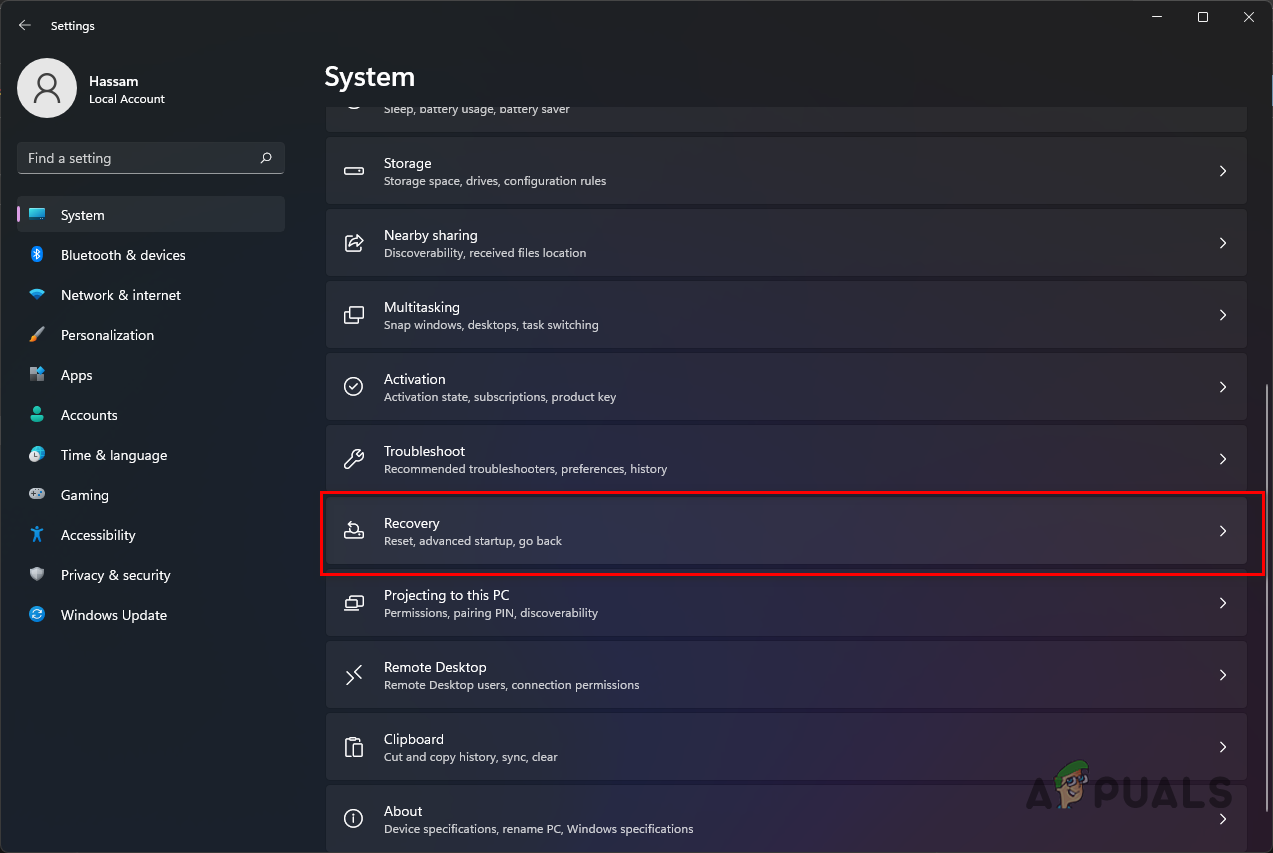
Navigating to Recovery Settings - Then, click the Reset PC option.
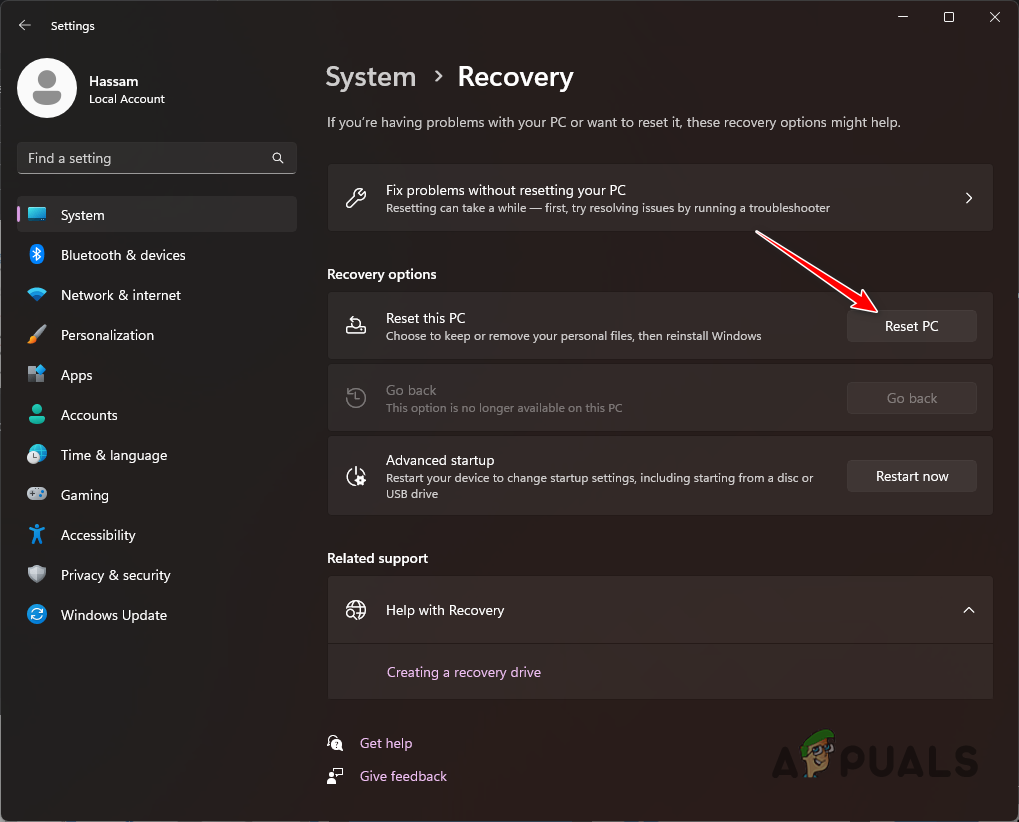
Resetting this PC - If you want to keep your personal files, click the Keep my files option.
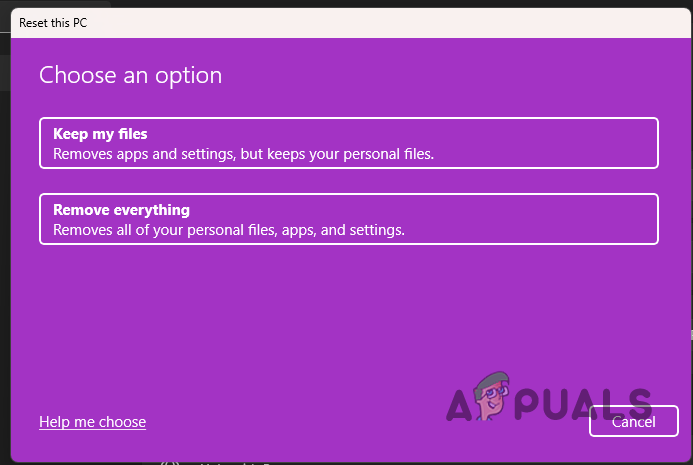
Resetting Windows - Follow the on-screen prompts to choose what to keep on your PC.
- Otherwise, select the Remove everything option to completely format your drive and reinstall Windows.
You should be able to navigate the Windows Defenders crashes with these solutions. Keeping your system files in check is an important preventive measure to ensure your system components work fine on your PC. Additionally, update your operating system frequently to make sure you do not run into bugs that have been patched by the developer team.
Microsoft Defender Crashing - FAQ
There can be various causes for the app to crash on your computer. From system files to the Windows Defender package, the list can vary. However, you should be able to resolve the issue with the solutions in the article above.
Windows Defender is an important Windows package that cannot be removed from the system. In addition, removing the package is not recommended either. This is because it keeps you safe from unwanted files that could potentially harm your data. If you wish to prevent the issue from repeating, ensure your Windows is up to date, and there are no viruses or corruption in the system files by performing regular checks.
 Reviewed by
Reviewed by 